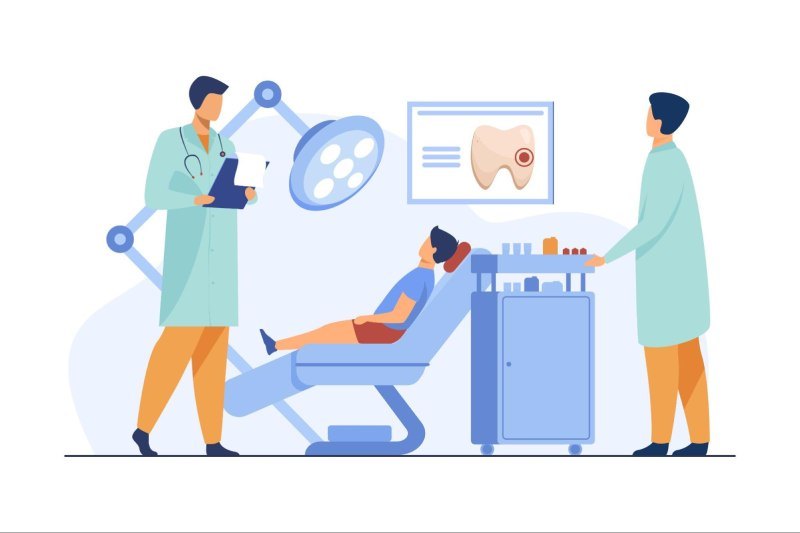
Dental hygiene, a crucial aspect of overall health, has evolved over centuries, impacting individuals’ quality of life, confidence, and general health. It involves maintaining the cleanliness of the teeth, gums, and mouth to prevent oral diseases such as cavities, gum disease, and bad breath. Oral health is closely tied to general well-being so poor dental hygiene can lead to various complications, including heart disease, diabetes, and respiratory conditions. This article delves into the global statistics surrounding dental hygiene, explores pain points, and forecasts future trends in oral care.
The State of Global Dental Hygiene
Dental hygiene practices vary significantly across regions due to many factors, including access to care, education, income levels, and cultural norms. However, in most industrialized nations, there has been a push towards improving dental health, resulting in an overall improvement in oral hygiene practices. The World Health Organization (WHO) reports that oral diseases affect nearly 3.5 billion people worldwide, with dental caries (tooth decay) and periodontal disease being the most prevalent.
Global Statistics on Dental Hygiene
According to the latest data from the Global Burden of Disease Study 2019:
- Prevalence of Dental Caries:
Dental caries is one of the most widespread chronic diseases globally, affecting approximately 2.3 billion people, or nearly 30% of the global population. It is most prevalent in children aged 6 to 9, where nearly 60-90% of schoolchildren worldwide are affected. The condition remains common across all age groups. Still, the severity increases with age due to prolonged exposure to risk factors such as diet, poor oral hygiene, and limited access to dental care. - Periodontal Disease:
Nearly 50% of the global adult population suffers from some form of gum disease, with about 10% of adults experiencing severe periodontitis, which can lead to tooth loss if untreated. Periodontal disease is particularly prominent in middle-aged and older adults, with prevalence rates often increasing with age. - Oral Cancer:
Oral cancer, which can be attributed to factors such as smoking, alcohol consumption, and poor oral hygiene, has a global mortality rate of around 3%. In countries like India, oral cancer rates are alarmingly high, with more than 130,000 new cases each year, primarily due to the widespread use of tobacco products. - Access to Dental Care:
Access to dental care remains one of the greatest disparities in global oral health. While countries like the United States, Canada, and Europe boast high levels of dental care accessibility, over 50% of the world’s population lacks access to essential oral health services. This gap is particularly severe in low—and middle-income countries, where financial barriers and limited healthcare infrastructure persist. - Fluoride Use:
Fluoride in drinking water and dental products such as toothpaste has been a cornerstone in global dental health efforts. Approximately 66% of the world’s population now has access to fluoridated water, a significant increase from past decades. However, despite this progress, regions like Southeast Asia and Sub-Saharan Africa still face challenges in fluoridating their water supplies.
Pain Points in Global Dental Hygiene

Despite significant progress in raising awareness about the importance of dental hygiene, several barriers continue to hinder global improvement in oral health. These barriers span financial, educational, cultural, and logistical barriers.
1. Lack of Education and Awareness:
In many developing countries, dental hygiene practices are not widely understood, and there is limited knowledge about the consequences of poor oral health. Many people are unaware of the importance of brushing their teeth at least twice daily, flossing, or using mouthwash. This lack of education often results in neglect and poor oral hygiene habits.
In addition, some people, especially in rural areas, may not be aware of how their diet, smoking, and alcohol consumption affect oral health. This lack of knowledge contributes significantly to the global burden of dental diseases.
2. High Costs of Dental Care:
Dental care, especially advanced treatments such as root canals, fillings, or implants, can be prohibitively expensive. This financial barrier is more pronounced in low-income and middle-income countries, where national health insurance or social safety nets may not cover dental care.
Even in wealthier nations, dental insurance may not adequately cover the cost of dental treatments, leading individuals to avoid necessary care due to the high out-of-pocket expenses. Dental care costs are also exacerbated by the rising cost of dental materials and the increasing complexity of treatments.
3. Access to Professional Care:
There may be a significant shortage of trained dental professionals in rural or underserved areas. According to the WHO, there is a global shortage of dental professionals, with many countries having fewer than one dentist per 10,000 people. This lack of access to care, compounded by long waiting times and the high cost of treatments, prevents millions from receiving the necessary dental services. In some regions, people may not have the opportunity to visit a dentist for routine check-ups or preventive care due to these barriers. Additionally, there are global inequalities in dental service distribution. Urban centers tend to have more accessible dental care, while rural areas are left underserved, creating a gap in care availability. This disparity is especially noticeable in Sub-Saharan Africa and parts of South Asia.
4. Cultural Barriers and Stigma:
Cultural beliefs and practices can sometimes hinder the adoption of modern dental hygiene practices. In some communities, the use of traditional methods, such as chewing sticks or miswak, is still prevalent despite the availability of modern toothbrushes and toothpaste. Although effective to some extent, these practices may not provide the same level of protection against dental diseases as contemporary oral hygiene products.
Additionally, there is still some stigma associated with seeking professional dental care. In certain regions, people may fear dental treatments or associate them with pain or discomfort, which leads them to delay or avoid necessary care until the issue becomes severe.
5. Dietary Habits and the Rise of Sugar Consumption:
One of the most significant contributors to dental problems worldwide is diet. Global sugar consumption has skyrocketed in recent decades, leading to a sharp rise in dental caries and other oral health problems. High sugar intake, particularly from processed foods, soft drinks, and sugary snacks, creates an environment in the mouth where harmful bacteria thrive, leading to tooth decay and gum disease.
The WHO estimates that nearly 40% of the world’s population consumes more sugar than the recommended daily intake. This rise in sugar consumption, coupled with poor oral hygiene, has fueled the dental health crisis in both developed and developing nations.
Forecast for the Future of Dental Hygiene

The future of dental hygiene looks promising, with several advancements in technology, public health policies, and global awareness set to address current challenges and improve global oral health.
1. Increased Focus on Preventive Care:
As awareness of the connection between oral health and overall health grows, there is likely to be a stronger emphasis on preventive care. Governments and organizations like the WHO are increasingly promoting daily brushing, flossing, and regular dental check-ups as essential components of a healthy lifestyle.
In addition, as dental care costs continue to rise, preventive measures, such as fluoride toothpaste, dental sealants, and dietary modifications, will become even more crucial in reducing the global burden of oral diseases.
2. Technological Advancements:
The role of technology in dental hygiene is growing rapidly. Innovations in diagnostic tools, such as artificial intelligence (AI) in dental imaging, will make detecting early signs of tooth decay and gum disease easier. AI can also be used to predict a patient’s risk of developing oral diseases based on factors such as genetics, diet, and lifestyle.
The development of advanced materials for dental fillings, crowns, and implants is also expected to improve the longevity and effectiveness of dental treatments. Moreover, 3D printing technology will revolutionize the creation of dental prosthetics, offering more personalized and affordable solutions for patients.
3. Tele-dentistry:
With the growing adoption of telemedicine, tele-dentistry is expected to become a major part of global dental care. Through virtual consultations, dental professionals can provide advice, diagnose issues, and recommend treatments, making dental care more accessible to those in remote or underserved regions.
Tele-dentistry will also significantly contribute to educating the population about the importance of maintaining oral hygiene and preventing diseases, thus helping to bridge the gap in areas with limited access to physical dental clinics.
4. Integration of Dental and General Healthcare:
As research continues to highlight the connection between oral health and systemic diseases, such as diabetes, heart disease, and respiratory conditions, dental care will likely be more integrated into general healthcare systems. This holistic approach will not only improve patient outcomes but also increase the emphasis on oral hygiene as an integral component of overall health.
5. Sustainability in Dental Products:
Environmental sustainability will be a major consideration in the future of dental hygiene. The production and disposal of single-use plastic dental products, such as toothbrushes, toothpaste tubes, and floss, contribute significantly to plastic waste. As the demand for eco-friendly alternatives grows, companies are likely to introduce biodegradable or reusable dental products, helping to reduce the dental industry’s ecological impact.
Conclusion
Dental hygiene remains a critical component of overall health and well-being, but global disparities in access to care, education, and affordability continue to present significant challenges. While significant progress has been made, especially in high-income countries, the need for widespread education, better access to professional care, and a greater focus on prevention is evident.
The future of dental hygiene is promising, with advancements in technology, preventive care, and sustainability poised to transform the landscape of oral health. By addressing the pain points and embracing innovations, the world can move closer to ensuring that everyone has access to the care and knowledge needed to maintain a healthy smile for life.